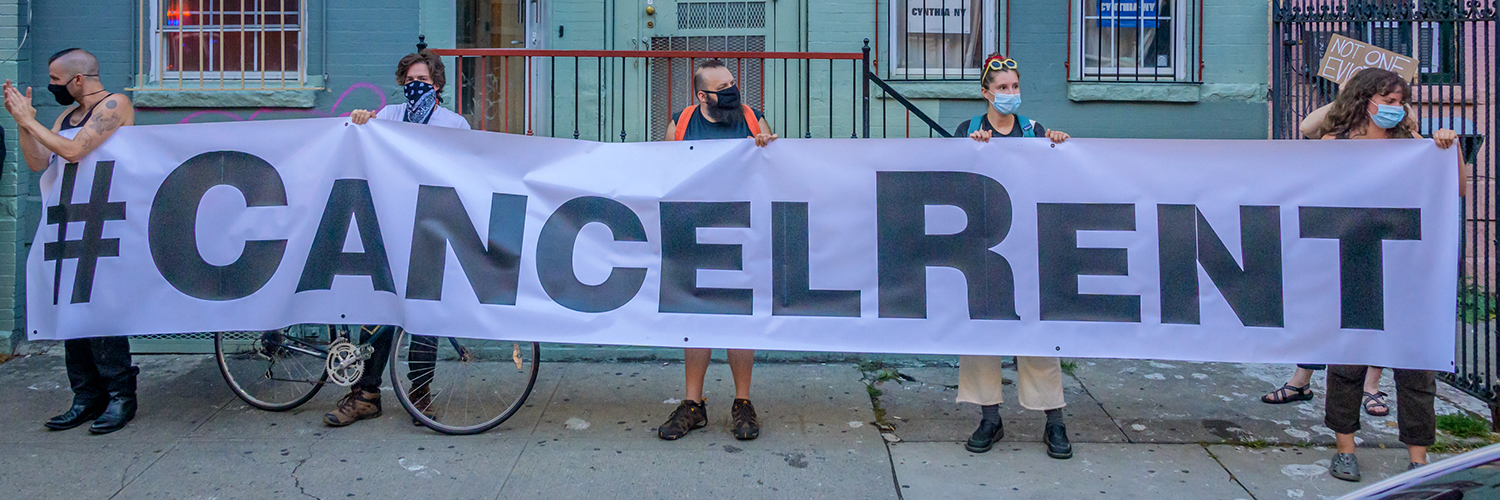
<p>Protesters hold a #CancelRent banner in Brooklyn, New York, on July 1, 2020. (Photo by Erik McGregor/LightRocket via Getty Images)</p>
For renters struggling because of the pandemic, the July 31 expiration of the Coronavirus Aid, Relief, and Economic Security (CARES) Act supplemental unemployment benefits posed a challenge. Without that $600 weekly supplement, households experiencing job loss face a greater rent burden (paying more than 30 percent of pretax income toward housing).
But on September 4, the US Centers for Disease Control and Prevention (CDC) issued a national eviction moratorium, a welcome relief for these renters. And last week, Speaker Pelosi and Treasury Secretary Mnuchin resumed discussions around the contours of a relief package. We’ve updated our estimates to understand how much rental assistance is needed for those who are still rent burdened, as many will be at risk when the moratorium expires on December 31, and others are facing eviction in spite of the national moratorium.
The economic situation has improved since spring. Our estimate of the number of renter households in which at least one member experienced a job loss decreased from 8.9 million to 5.3 million. This estimate does not include other effects on wages (PDF), such as reductions in hours. We estimate 68 percent of renter households that experienced a recent job loss are rent burdened when receiving only state unemployment insurance. Receiving $300 in weekly supplemental federal unemployment assistance reduces rent burden among those households to 53 percent, and resuming the $600 per week benefits from the CARES Act would reduce it to 39 percent.
Despite the slight economic improvement, the need for rental assistance is more pressing than ever. The $300 federal supplemental assistance authorized through the president’s executive order is ending in some states. Renters who have not regained employment are likely to need longer-term assistance to stay housed, as many jobs are unlikely to return as the economy recovers.
In this round of estimates, we included a state-level analysis. Despite the slightly improved economy, our estimates show that renters in every state still need additional rental assistance, even after receiving unemployment benefits to reach their precrisis rent burden. In Michigan, one of the harder-hit states in terms of renter job loss, we estimate that the $600 weekly supplement reduces rent burden among unemployed renter households by almost 40 percentage points. But returning to precrisis levels would still leave approximately half of renters facing burdens nationally.
The CDC’s eviction moratorium affords most renters a few extra months without the threat of losing their housing, but the inability to pay rent puts renters and landlords in precarious financial situations. Rental assistance, whether it comes through expanding Section 8 vouchers, Emergency Solutions Grants, or other sources, would not only help households make their rental payments but could also prevent widening racial and economic disparities.
Let’s build a future where everyone, everywhere has the opportunity and power to thrive
Urban is more determined than ever to partner with changemakers to unlock opportunities that give people across the country a fair shot at reaching their fullest potential. Invest in Urban to power this type of work.